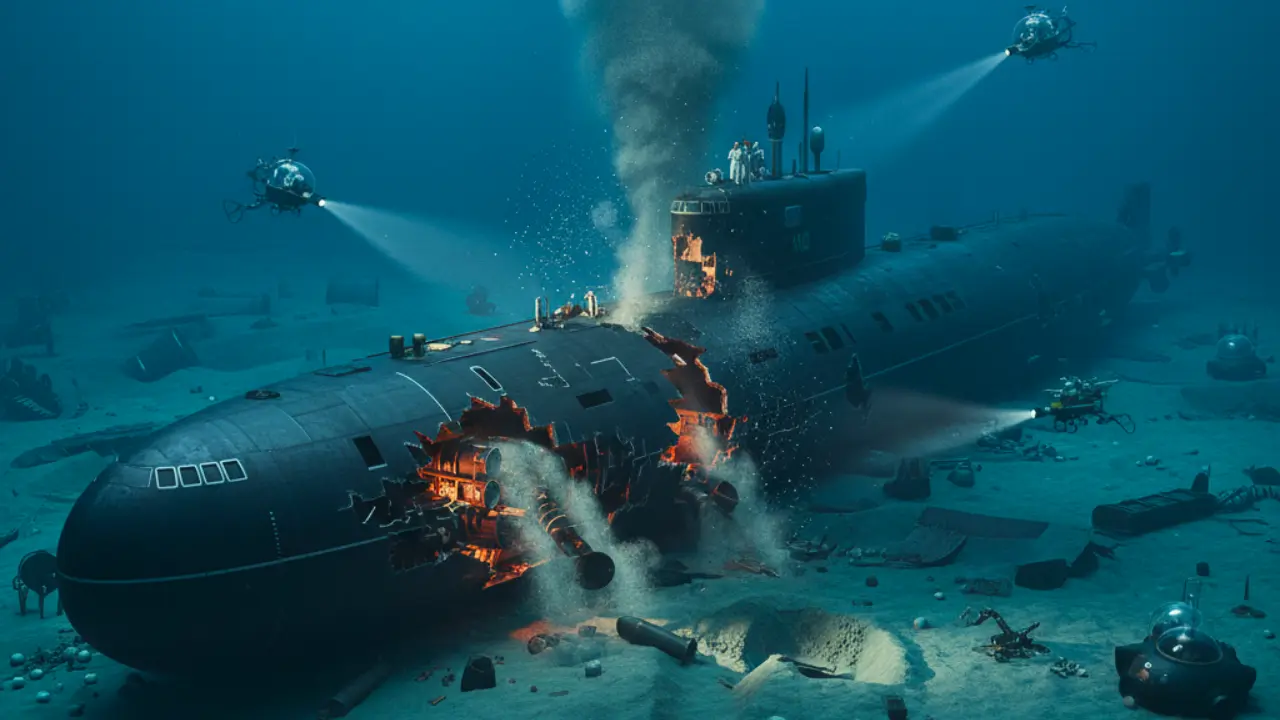Beneath the icy waters of the Arctic and the depths of the world’s oceans, a silent, deadly game has been playing out for decades. Russia’s nuclear submarine fleet, a cornerstone of its military power, has a storied and often tragic history. From the depths of the Cold War to the post-Soviet era, the topic of a Russian nuclear submarine accident is not merely a matter of military history; it’s a profound look into technological risk, geopolitical tension, and the immense human cost of life at sea.
These incidents, while rare, serve as stark reminders of the high stakes involved in operating such complex and dangerous vessels. The loss of a submarine and its crew is a national tragedy, but the presence of a nuclear reactor adds a terrifying layer of potential environmental catastrophe. This article will delve into some of the most significant Russian nuclear submarine accidents, examining their causes, the official response, and the lasting impact they’ve had on Russia and the world.
The Ghosts of the Deep: Key Russian Nuclear Submarine Accidents
The history of Russia’s submarine fleet is marked by several high-profile disasters. Each one tells a unique story of failure, heroism, and the unforgiving nature of the deep.
1. The Kursk Disaster (2000)
The most infamous Russian nuclear submarine accident is undoubtedly the sinking of the K-141 Kursk. On August 12, 2000, during a major naval exercise in the Barents Sea, a practice torpedo on board the Kursk exploded, triggering a much larger secondary explosion. The blasts tore a hole in the submarine’s hull, causing it to sink to the seabed at a depth of 108 meters.
- The Cause: The official investigation concluded that the initial explosion was caused by a faulty weld in a Type 65-76A torpedo, which used highly volatile hydrogen peroxide fuel. This ignited, leading to a catastrophic chain reaction.
- The Response: The world watched in horror as the Russian government initially refused international aid, a decision that was widely criticized. After several days, they finally accepted help, but by then it was too late. All 118 crew members perished.
- The Aftermath: The tragedy exposed deep-seated issues within the Russian Navy, including outdated equipment, a lack of readiness, and a culture of secrecy. The incident had a lasting impact on Russia’s military credibility and became a defining moment in Vladimir Putin’s early presidency. The recovery operation was one of the largest and most complex ever undertaken.
2. The K-159 Sinking (2003)
Less known than the Kursk but equally tragic, the sinking of the K-159 in 2003 highlighted the dangers of aging military hardware. The decommissioned submarine, a first-generation nuclear vessel, sank in a storm while being towed for scrapping.
- The Cause: The submarine, which had been laid up for years, was being towed with flotation pontoons that failed in rough seas.
- The Nuclear Threat: While its reactors had been shut down, they still contained spent nuclear fuel. The submarine now lies at a depth of 240 meters in the Barents Sea with a significant amount of radioactive material on board, posing a long-term environmental risk to a vital fishing ground. This incident underscores the challenges of safely decommissioning and disposing of Cold War-era nuclear vessels.
The Underlying Causes: More Than Just Bad Luck
While each accident has its own specific triggers, a recurring set of systemic issues contributes to the pattern of a Russian nuclear submarine accident.
- Aging Infrastructure: A significant portion of the Russian submarine fleet, particularly the older vessels, dates back to the Soviet era. Decades of underfunding have led to a lack of proper maintenance, modernization, and safety overhauls.
- Safety Protocols and Training: In the past, there have been concerns about the quality of training and adherence to safety protocols. A 2007 survey by the Norwegian Radiation Protection Authority noted over 160 safety-related incidents on Russian nuclear submarines between 1958 and 2007, with a high concentration in the early decades due to what was described as a rushed, “quantity over quality” approach during the arms race.
- Secrecy and Misinformation: A culture of secrecy has often shrouded these incidents. The initial Russian response to the Kursk disaster, for example, was marked by a lack of transparency and a refusal to accept foreign assistance, which ultimately cost lives. This lack of openness erodes public trust and can hinder effective crisis management. For more information on military secrecy and its implications, you can read this article on The Challenges of Military Transparency.
Looking Forward: Lessons Learned and Ongoing Challenges
The tragedies of the past have not been in vain. The lessons learned from a Russian nuclear submarine accident have led to improvements in safety standards, communication protocols, and international cooperation. However, significant challenges remain.
Also Read: Trump Deploys National Guard to Portland as Oregon Sues Over ‘Unlawful’ Move
The decommissioning of Russia’s older nuclear submarines continues to be a pressing issue. Many are sitting in harbors, awaiting dismantling, with their nuclear reactors posing a persistent environmental threat. International collaboration, such as programs supported by the Global Partnership Against the Spread of Weapons and Materials of Mass Destruction, has been crucial in addressing this issue, but much work is still needed.
The legacy of these accidents is a grim reminder of the fine line between technological prowess and human vulnerability. While the crews of these submarines operate with immense courage and skill, they are often at the mercy of the machines they command and the policies that govern them. For an in-depth look at naval engineering and submarine design, visit a reputable source like the U.S. Naval Institute.
A Legacy of Courage and Caution
The history of the Russian nuclear submarine accident is a story of incredible power, tragic loss, and complex geopolitical dynamics. Each incident, from the well-known Kursk disaster to the ongoing concerns about sunken vessels, underscores the high-stakes nature of modern naval operations.
While Russia has made strides in improving its fleet’s safety, the aging infrastructure and the ever-present threat of human error and mechanical failure mean that the risk of another tragedy, and its potential nuclear consequences, can never be entirely dismissed. We must remember the brave sailors who lost their lives and continue to push for greater transparency, international cooperation, and a steadfast commitment to safety in the world’s most dangerous profession.
5 FAQs About Russian Nuclear Submarine Accidents
1. How many Russian nuclear submarines have been lost?
While exact numbers vary due to military secrecy, several Russian and Soviet nuclear submarines have been lost at sea, including the K-8 (1970), K-278 Komsomolets (1989), K-141 Kursk (2000), and K-159 (2003).
2. Was the Kursk disaster caused by a collision with a NATO submarine?
No. While conspiracy theories circulated, official investigations concluded that the Kursk disaster was caused by an internal torpedo explosion, not a collision with a foreign vessel.
3. What is the biggest danger from a sunken nuclear submarine?
The primary danger is the long-term environmental threat posed by the nuclear reactors and spent nuclear fuel. Over time, the containment structures could corrode, leading to a slow but persistent leak of radioactive materials into the marine ecosystem.
4. Has a Russian nuclear submarine accident ever resulted in a nuclear detonation?
No, a nuclear detonation has never occurred. The reactors on these submarines are designed to be extremely stable and have safety mechanisms to prevent a nuclear explosion, even in the event of a catastrophic accident. The danger is a potential radioactive leak, not a nuclear blast.
5. How is Russia addressing the issue of its aging nuclear submarines?
Russia is engaged in a long-term program to modernize its fleet and decommission older, high-risk vessels. This includes international cooperation with countries and organizations that provide technical and financial assistance for the safe dismantling of these vessels and the handling of their radioactive materials.

















